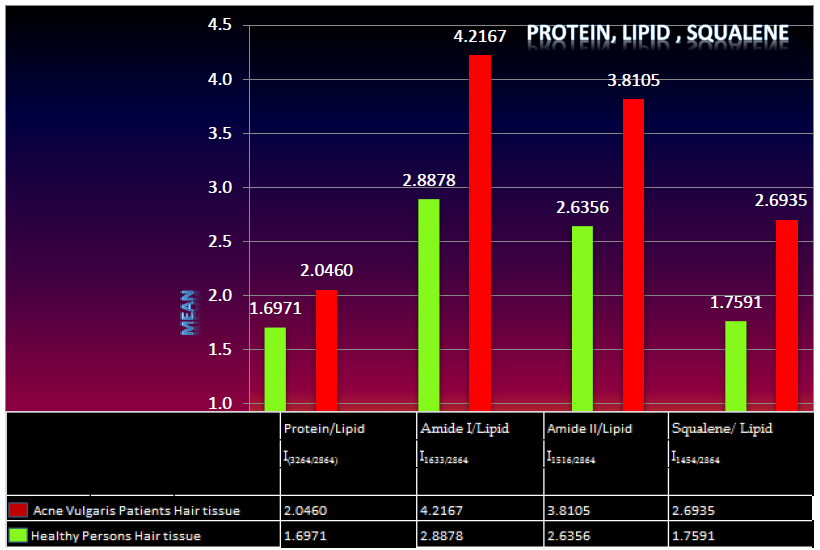Acne vulgaris is a chronic skin disease which occurs due to inflammation of the hair follicles and sebum-producing (sebaceous) glands of the skin called pilosebaceous unit and the anaerobic propionic acne bacterium, P.acne. Human sebum is dominantly made up of 57.5% of triglycerides and fatty acids, 26%wax esters, 12% Squalene and 4.5% Cholesterol. The increased level Androgen hormone, sebum lipid composition, P.acne overgrowth which induces monocytes and pro-inflammatory cytokines attract neutrophils, basophils, and T cells to the pilosebaceous unit and drive epithelial hyperproliferation i.e., Acne vulgaris. The actual biomolecular changes due to acne vulgaris disease are present in the blood and in the sebum and also in the noninvasive sample of human scalp hair follicles. The main objectives of the present study are to analyze human scalp hair follicles samples using FTIR-ATR spectroscopy to compare and discriminate the spectral signatures of acne vulgaris and healthy scalp hair tissue samples through acne bio-markers Protein, Amide I, Amide II and Squalene (LDL), using the method of internal ratio parameters.

